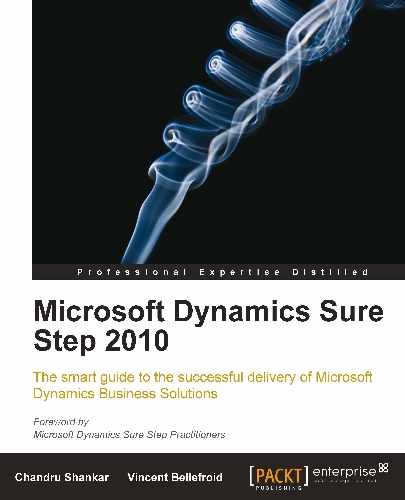Let's begin this discussion by expounding on the definition of a "solution". Quite simply, the word solution means an answer to a problem. But the English Thesaurus offers us other terms such as key, clarification, elucidation, explanation, resolution, and result. All of these definitions fit quite nicely into the constructs of business solution selling, and therein is the crux of the issue—"solution" can mean different things to different people. Because a solution has applicability to multiple contexts, it is a commonly used word in organizations, necessitating that the organizations must clearly define the usage of the term.
In his book, The New Solution Selling, Keith Eades, who founded the Sales Performance International (SPI) organization, discusses the definition of "solution". He describes a solution as: "a mutually agreed-upon answer to a recognized problem, with a specific emphasis on the need for the problem to be acknowledged by both parties, the buyers (customers) and the sellers (solution provider)". The second aspect of a solution highlighted in the book is that it should "provide some measurable improvement". With that, Eades provides a complete definition of a solution as:
a mutually shared answer to a recognized problem, and the answer provides measurable improvement.
For some organizations, it has become very fashionable to say that they have "solutions" and that they are "solutions-focused", as this apparently takes away the negative connotation associated with the term "products". A product is viewed as an offering that the selling company is forcing on the marketplace, while a solution is viewed as something the marketplace is actively seeking, with the solution being that answer the sellers can offer to the buyers. So, is the product the antithesis of a solution? Far from it! In many cases, and especially in the context of business solutions, the product can be the primary driver of the solution. But it is in the usage or delivery of that product that can truly define the success or failure of the solution for the customer. And the up-front positioning of the solution is the key to a successful delivery, which is where the solution-centric approach comes in.
For an organization to be truly solution focused, Eades explains that they need "more than superficial packaging manipulations or bundling services with products". Solution-centric should not be treated as buzz words to be thrown around by the organization. In the book titled The Solution-Centric Organization, Eades states that "solution centric organizations define themselves by the problems they solve for customers, versus by the products or services they make, sell or deliver". Solution-centric should be a philosophy that permeates throughout the organization so that teams such as sales, marketing, services, and so on are all aligned around a common approach and model.
The need to be truly solution-centric is even more important in mature marketplaces such as ERP/CRM solutions. In this market, many of the top solution providers offer products that have been around and used by many organizations. Each of these products includes a range of features and functionality that are hard to differentiate from the competition. SPI terms this differentiation blur, which is a result of the product being perceived as commoditized, or the product becoming too complex and feature rich for the industry to be able to differentiate it. To combat this issue, companies start to bundle their products with services and deem these as solutions. But what they have really achieved is creating what SPI labels as "pseudo solutions".
Such approaches neither help the customers looking for a solution, nor do they help the solution provider develop a consistent approach to selling. This is further corroborated by a market research by industry analysts, who found only a ten percent effectiveness rate of value positioning by these solution providers. The research also points to other findings that are endemic in a pseudo-solution company. In these companies, a high percentage (70 to 80 percent) of the marketing materials remain unused, highlighting the disconnect between the sales and the marketing teams. Another finding in these companies is that they revert to sales training to solve the problem, and they often find the shelf life of unreinforced sales training to be about six to eight weeks.
So how then does a company become truly solution centric? As SPI puts it, for a true solution-centric approach, organizations need to embrace a sustained business model to market, sell, and deliver customer transformation. They need to identify the problems they solve rather than the products they offer, align all of the aspects of their marketing with the solution framework, and systemically adopt and reinforce the solution selling and solution-centric disciplines across the entire organization. Companies doing this will find themselves able to consistently position the value of their solutions to their customers, to clearly differentiate the value vis-à-vis their competition, and create a business model for sustainable growth.
